Trees, Trees, Trees. I hiked 6 miles today underneath the shade of these giant Japanese cedar trees. It was a spectacular day of challenge, tranquility, and nature. If you just hike the Kumano Kodo trail you are going to miss out.
You have to take the time to stop, sit, and listen to the stillness. You’ll hear the birds, the leaves blowing in the breeze, and the bugs – it will sound like nature’s symphony. It reminded me of my childhood growing up in the forested countryside; a good memory to think about as I hiked.
I understand why the Japanese love this area of the Kii Peninsula; it’s a special place to spend 5 days hiking.
“The trees speak to me. There is absolutely a healing power here if you take the time to stop, listen, and feel.”

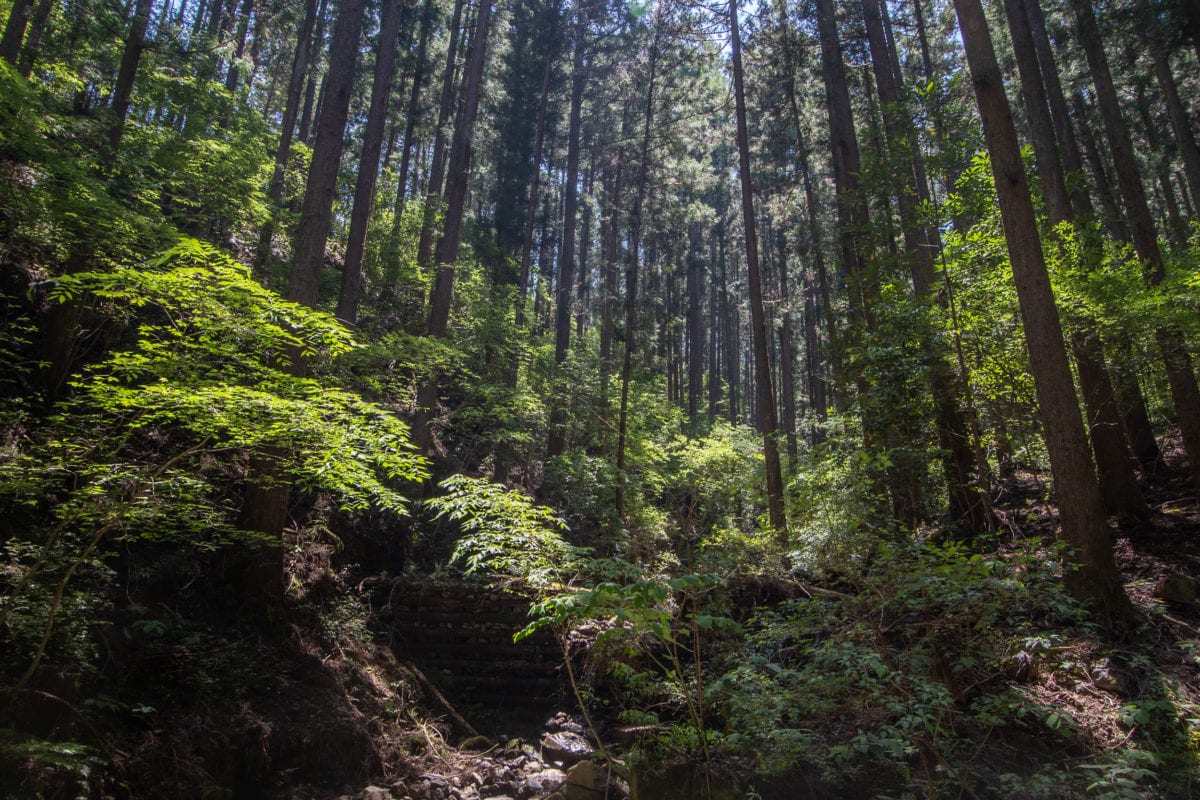
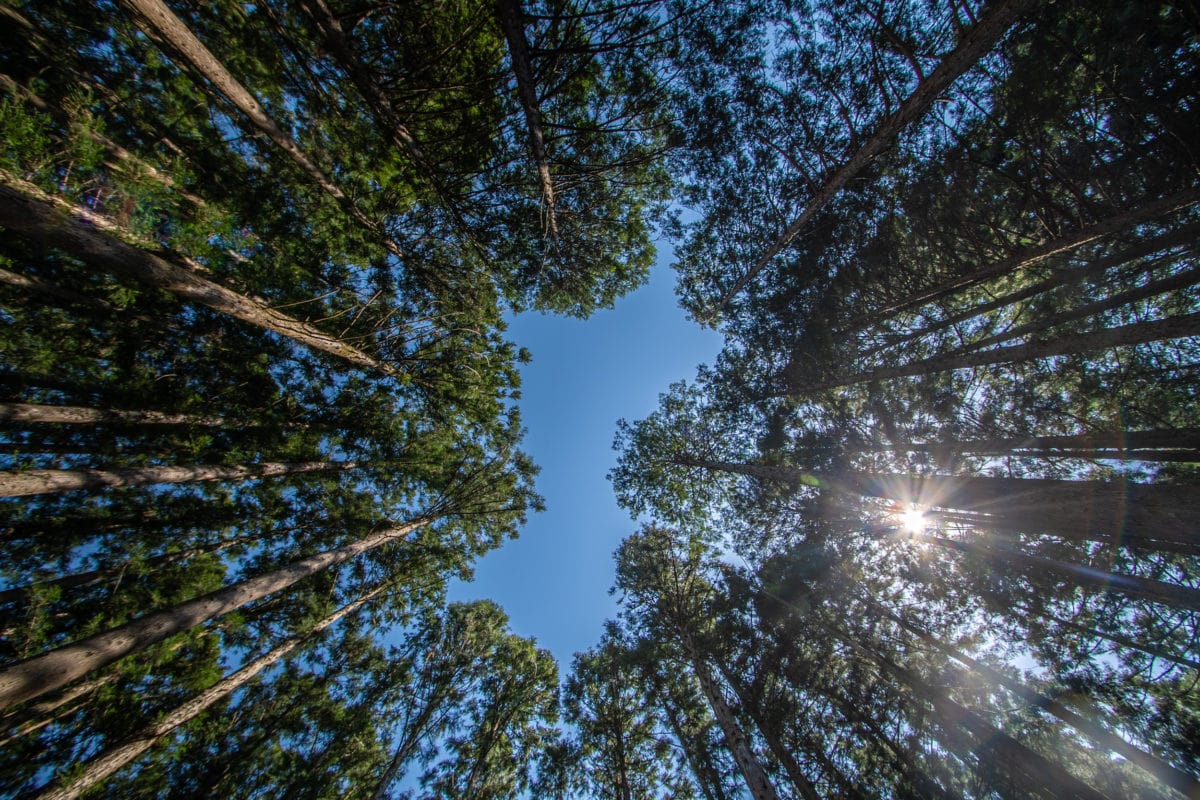
Table of Contents
What is the Kumano Kodo Trail?
Over the past ten centuries, people from all levels of society have journeyed to the tranquil Kii Mountains in Japan, following many pilgrimage routes to the revered Kumano Sanzan Shrines. The various paths are known collectively as the Kumano Kodo. The 3 shrines collectively known as Kumano Sanzan, are Kumano Hayatama Taisha Grand Shrine, Kumano Nachi Taisha Grand Shrine, and Kumano Hongu Taisha Grand Shrine.
There is no real clear start and end point, nor is there a certain order or direction that you must go. It’s a series of paths that take you through the forests of the Kii Peninsula.
History of the Kumano Kodo Pilgrimage
Over 1,000 years ago in the 11th century, Japanese emperors and their court would traverse the Kumano Kodo paths starting from the empirical city of Kyoto. They hiked into the forests of the Kii Peninsula to arrive at the 3 temples. These journeys would take 30 to 40 days and were considered spiritual journeys as they searched for heaven on earth. It is believed that the Gods live in these forests. Along the way, they would stop and purify themselves at the Oji’s (smaller temples). The journeys were often deadly due to the difficulty and many people died along the route.
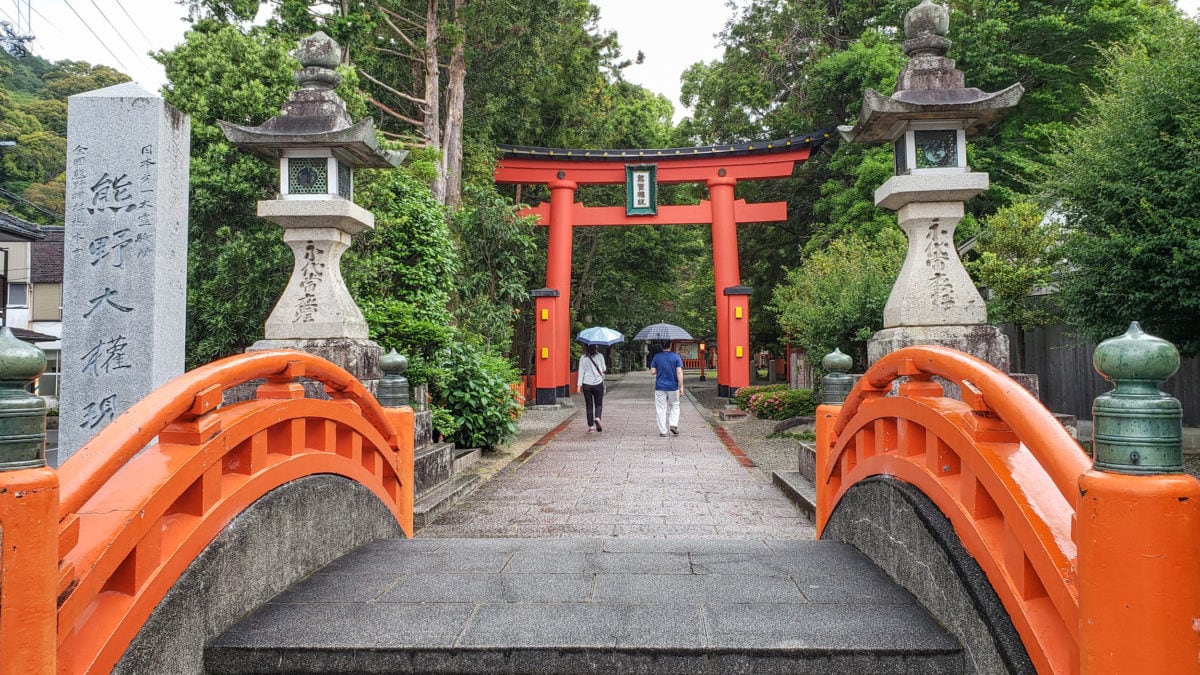
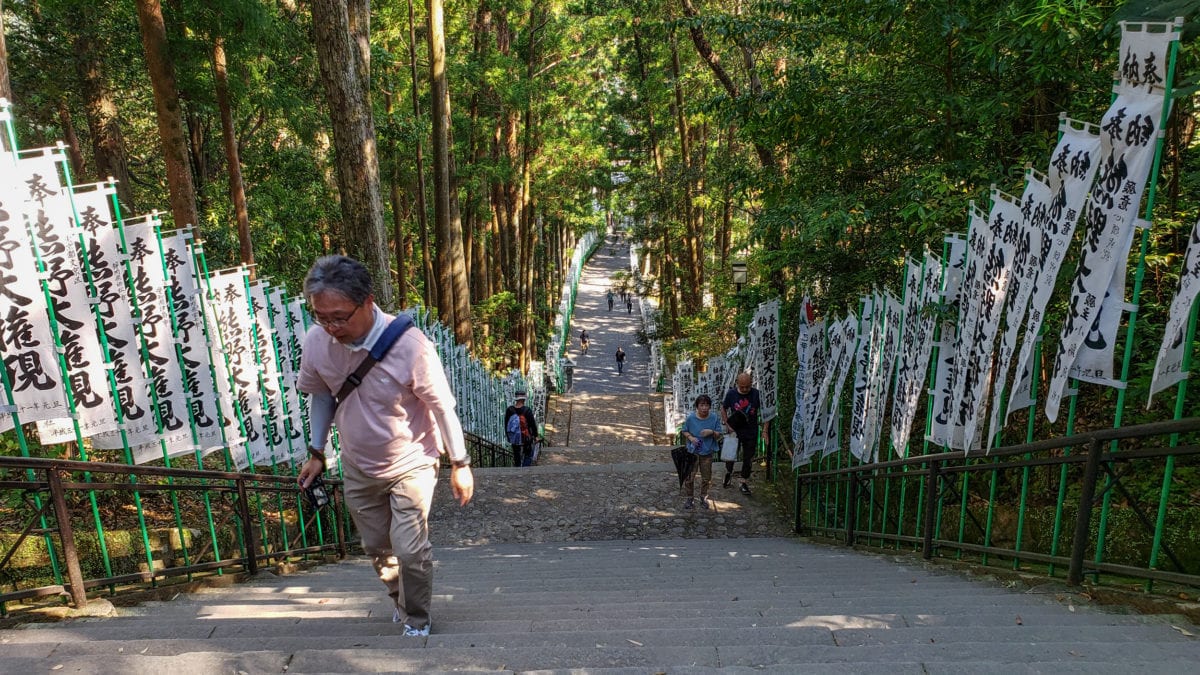
Eventually, this search for spirituality trickled down to the masses; samari as well as regular people started to eventually take these sacred journeys too.
Throughout time, the feudal system collapsed as did the routes in a way. However, in the 1990’s people started walking these trails again, and from that point on they have been growing in popularity. In 2004 the Kumano Kodo trail was given a UNESCO World Heritage designation. There are only two pilgrimages that have that designation; the Camino de Santiago and the Kumano Kodo.
Follow my Travels
Kumano Kodo Routes
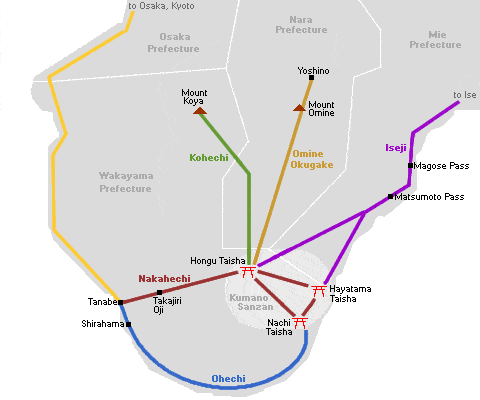
Nakahechi – This was the route mainly used by the imperial family coming from Kyoto. It also happens to be the route most modern-day pilgrims take. It’s probably the most established for tourism and lodging along the way. It starts in Tanabe on the western coast and heads east through the mountains to the 3 Grand Shrines. You can do variations of 10 to 4 days of this route depending on your available time.
Ohechi – this route traverses the southern coast from Tanabe to Nachi Taisha. Only short sections of the paths remain today due to the development of roads.
Kohechi – this route travels North/South through the middle of the Kii Peninsula. It crosses three 3,000 ft passes along its 70km. It’s a more advanced hiking route with much fewer people.
Iseji – runs along the east coast of the Kii Peninsula. Only short sections of the paths remain today due to the development of roads.
How to Get Dual Pilgrim Status
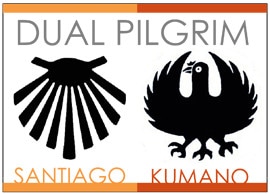
You’ve heard of sister cities, well the Kumano Kodo trail and the Camino de Santiago are sister pilgrimages! Since both received UNESCO status, they have banded together to offer a dual pilgrim status for pilgrims who complete one of each of the following:
WAY OF ST. JAMES
• at least the last 100 km on foot or by horse, or
KUMANO KODO
• Takijiri-oji to Kumano Hongu Taisha on foot (~38 km) or
• Kumano Nachi Taisha to/from Kumano Hongu Taisha on foot (~30 km) or
• Hosshinmon-oji to Kumano Hongu Taisha on foot (~7 km) plus a visit to Kumano Hayatama Taisha and Kumano Nachi Taisha or
• Koyasan to Kumano Hongu Taisha on foot (~70 km)
Find more information on how to get dual pilgrimage status here.
Is the Kumano Kodo Trail Like the Camino de Santiago?
No! If you are coming to the Kumano Kodo thinking that it is like the Camino, then you will be quite shocked as the two really don’t have much in common except the UNESCO status and spirituality.
The hikes are very different in length, difficulty, terrain, and facilities. Since I have done both and am technically a dual pilgrim (woohoo!!), here are some of the main things that are different on the Kumano Kodo from the Camino de Santiago:
- It’s much harder! Proper hiking is required.
- It’s shorter – only 5 or 10 days compared to 4 or 5 weeks.
- There are fewer towns
- There are fewer lodging and restaurants along the path.
- Fewer people hike the Kumano Kodo trail.
Are you Interested in Completing the Camino de Santiago?
Read all about my 5 week journey to complete the Camino de Santiago and the Way of Saint James.
Hiking the Kumano Kodo Trail
This May I hiked a portion of the 44-mile Nakahechi Route solo. I spent 5 days covering 33.6 tough miles from Takijiri-Oji to Nachi Temple and waterfall. In addition, I spent a day hiking with a Yamabushi monk near Hongu in the mountains. I utilized Oku Japan and their self-guided package where they organized all of my lodging and some of my transportation. It was a perfect way to experience this area on my own.

Learn about Oku Japan’s Self-Guided Kumano Kodo Tours
Listen to my interview about hiking the Kumano Kodo on the Amateur Traveler Podcast!
Amateur Traveler Episode 672 – Kumano Kodo Trail in Japan
Kumano Kodo Trail Frequently Asked Questions
Who Can Hike It?
Anyone can hike it. However, I suggest you have a good level of fitness as the hikes are not easy. According to Oku, most of their bookings are by Australians and Americans, as well as hikers from the UK and Singapore. However, there seems to be an increasingly steady stream of walkers interested in this trail from all over the world.
Is it crowded?
No, it’s not crowded at all. I hiked alone, and most days I only saw about 15 people after hiking all day. And sometimes I only saw 3! I really felt as if I was alone on this trail.
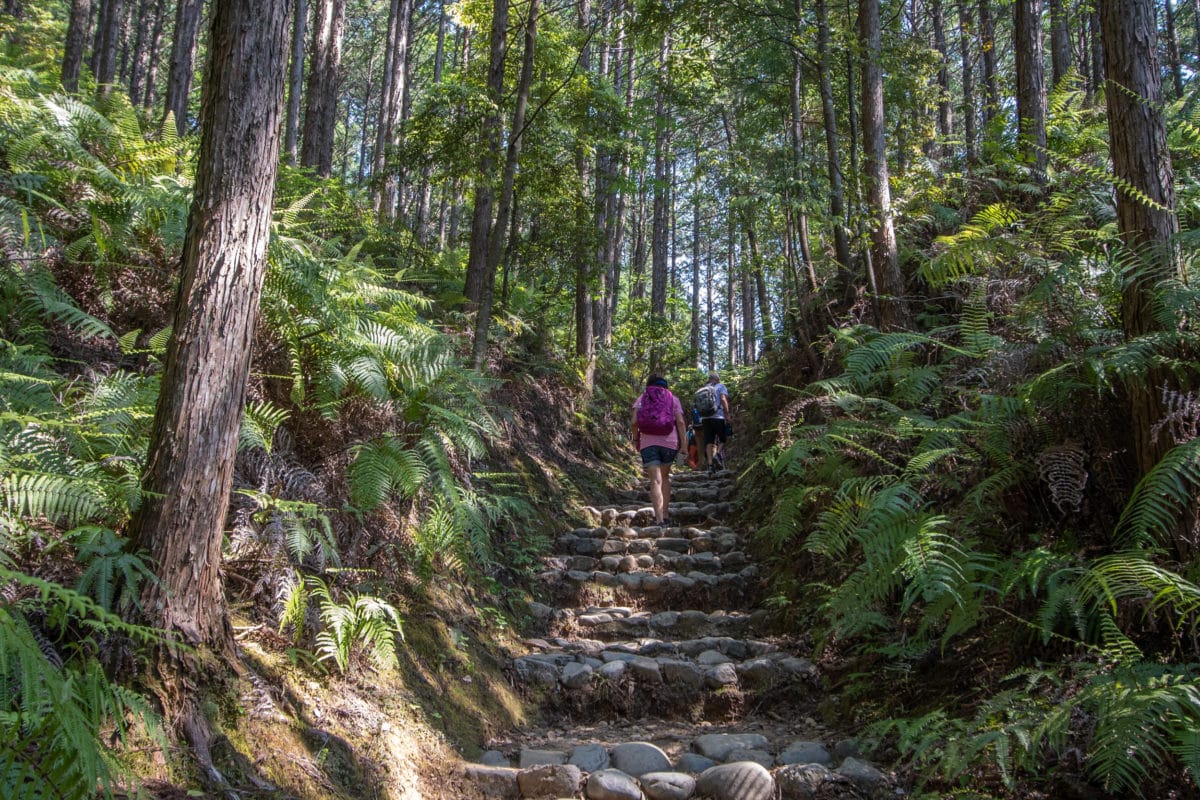
There aren’t any numbers released on how many people hike the trail a year that I’ve been able to find. I asked Oku Japan and they said from looking at their bookings, the numbers have been dramatically increasing. However, due to the limited accommodation on the trail, it remains a peaceful trail even during the spring and autumn peak seasons.
Can you walk it solo?
Yes! However, since there aren’t many people on the trail overall, it means that you will really be alone. \There were a few people on the trail, but people were pretty ‘distant’, unlike the Camino de Santiago where you’d often start hiking with other people you passed. I was alone 80% of the time, and that was fine.
Even though I was alone, I always felt safe. One nice thing about having Oku Japan around my lodging is that the lodges were expecting me, so if I wouldn’t have shown up, Oku and the lodge would have known.
Hiking packing list – essential hiking gear for any hike
Is the Kumano Kodo trail a hard hike?
It’s always hard to rate hiking difficulty because everyone is different. However, I do believe this was a moderate to strenuous hike. There are a lot of ups and downs in the route. But the good news is that you don’t have to deal with altitude.
My last day of hiking the Ogumotori-goe section was brutal going up 2,600 feet in 2.5 miles. And then you had to go back down about 2000 feet to the temple! It was a hard day; my knees were screaming. Plus – it was at the end of the hike when my body was already pretty severely tired from the previous 4 days of hiking!
The multi-day aspect of the hike is also what makes it challenging. If you just walk for a day, it’s not that bad. But string 5 days in a row of that up and down and you will feel it.
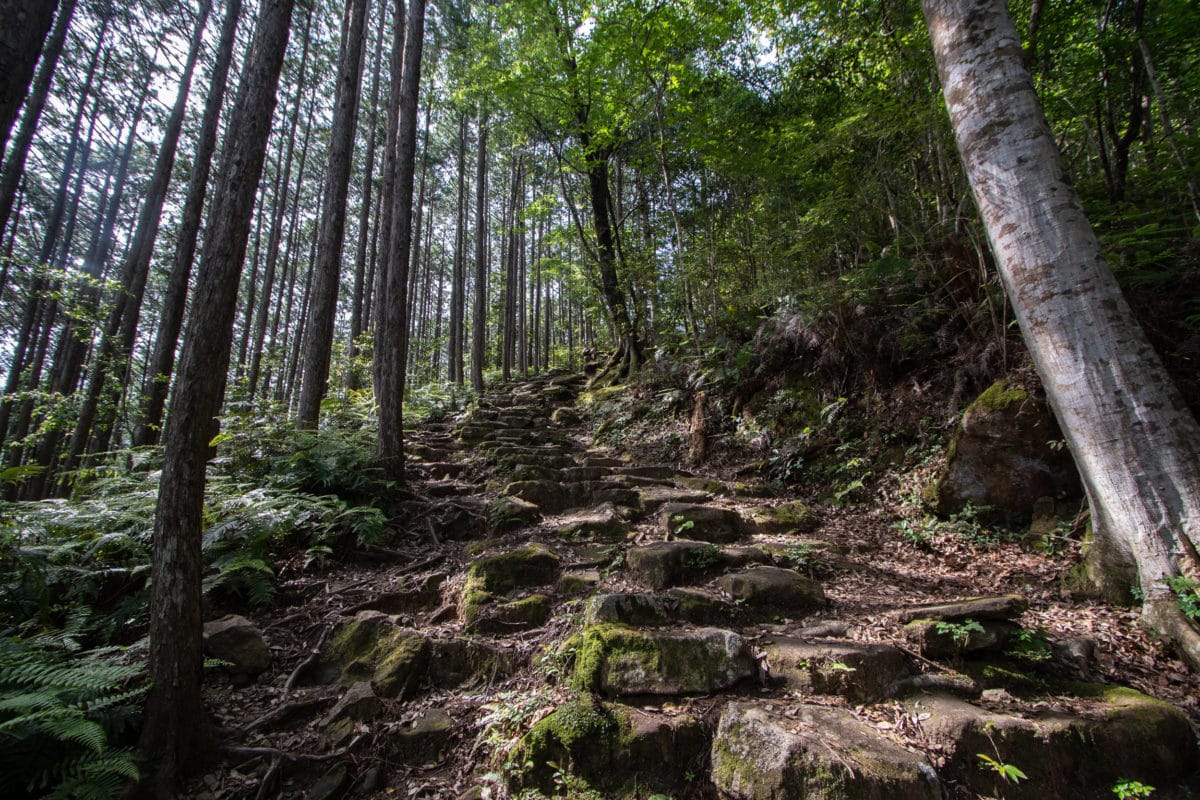
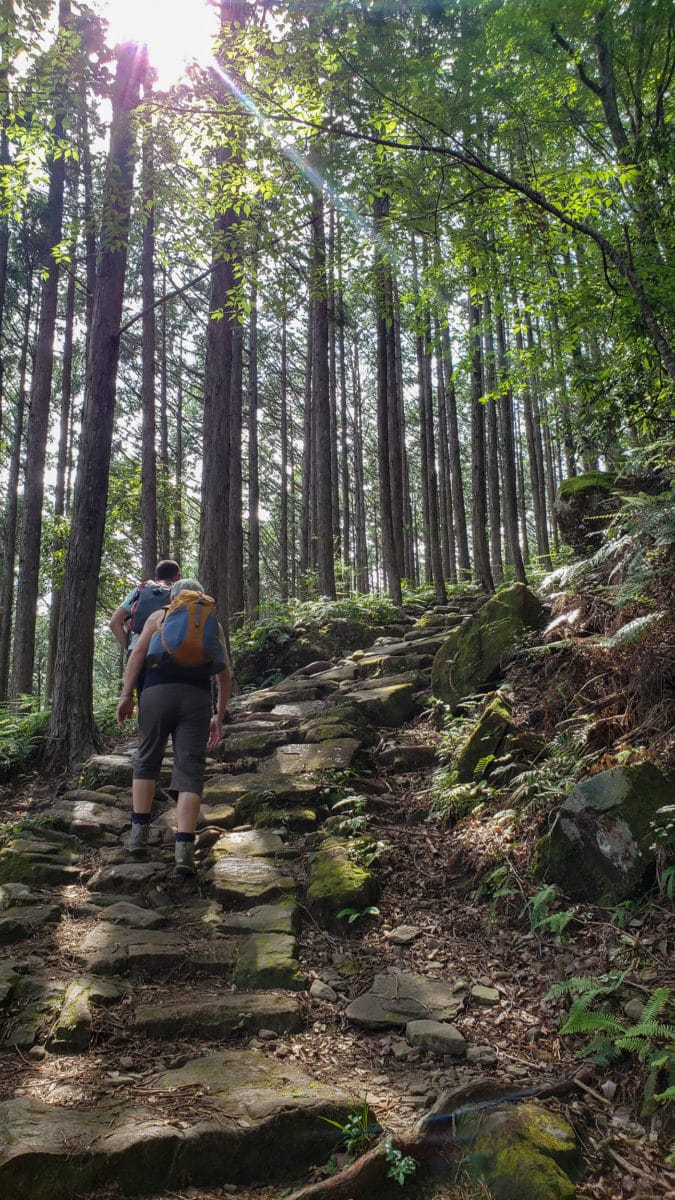
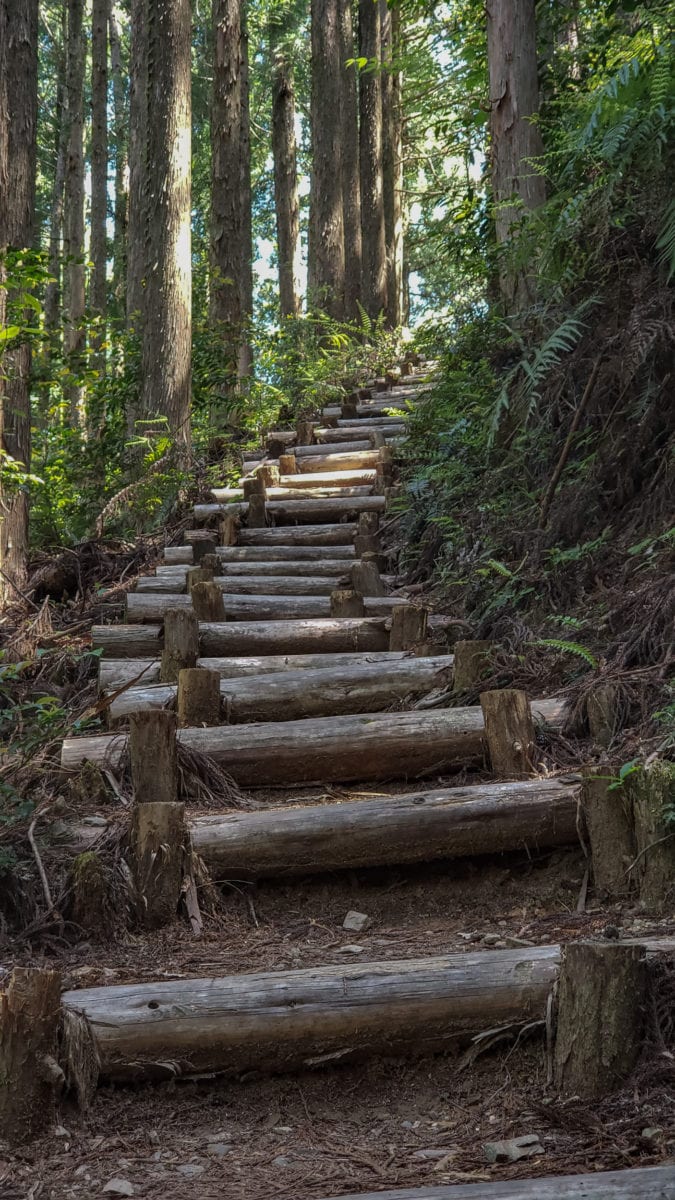
This is a hike you’d want to train for. I suggest that you also train back-to-back days so you can get used to getting up and hiking again even when your body is tired and sore!
What is the best time of year to Hike the Kumano Kodo?
The trail is open year-round. There is occasionally snow in the winter. The best times to go are probably April to November. Note that in June the rainy season starts and it’s likely you’ll run into more rain in June/July.
Holiday periods to be aware of (and you should likely avoid) – Japanese New Year holiday period (last few days of December, through around 04 January) some of the small, family-run inns may not be in operation, the Japanese Golden Week holiday period (last week of April through the first week of May), and Japanese Obon holiday period (typically 10 – 18 August). The busiest months are April, May, September, October, and November.
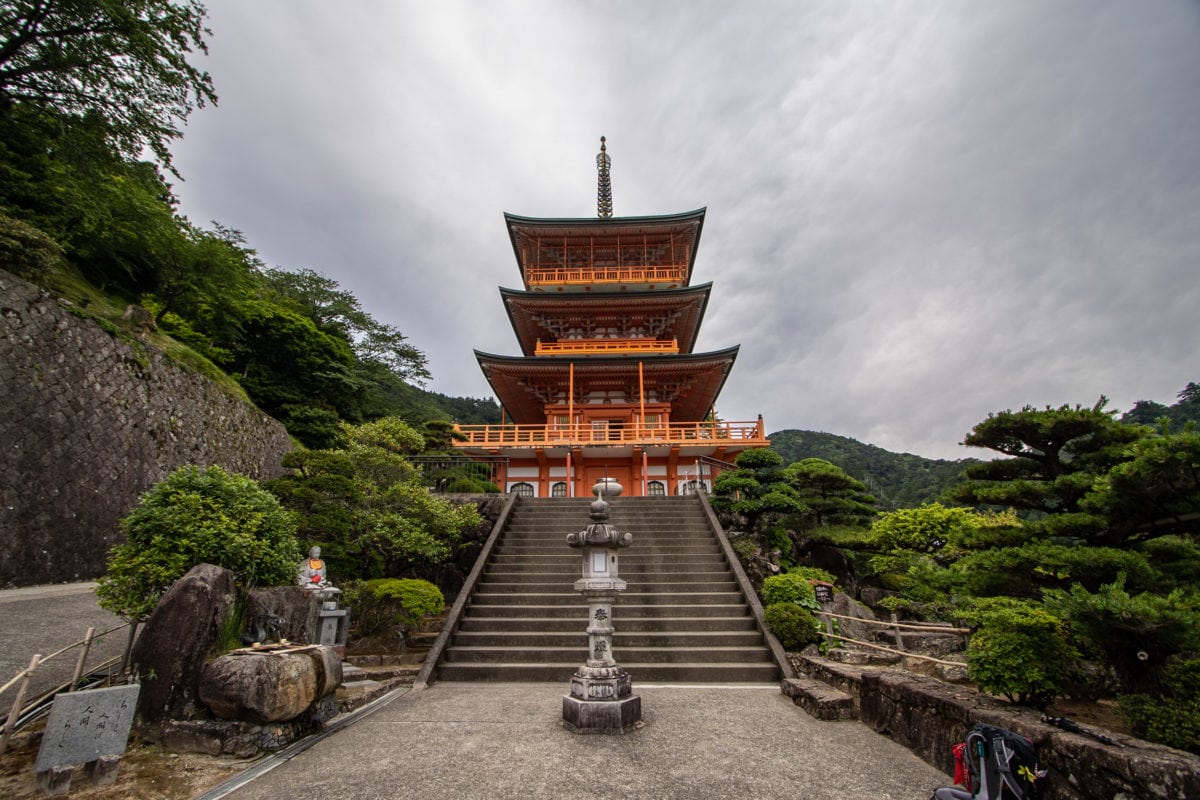
I went at the end of May into the beginning of June and it worked out quite well. I didn’t really have any rain of significance. However, it was quite hot and humid. I personally think that going in April or October would be perfect!
Where do you sleep and do you need to reserve ahead?
My lodging on the Kumano Kodo trail ranged from simple guest houses to fancy ryokan and onsen. I loved both! The Ryokans all had very traditional rooms, slept on the floor, and had incredible dinners included, while the guest house was much more personable – it was so nice to do both!
YES – you need to reserve ahead! This is exactly why I used Oku Japan’s self-guided tour so that they could reserve and ensure I had lodging.
“The Kumano region is rural and accommodations are limited, and more economical options are comparatively rare as inns tend to be run by local families and include meals as well. Reservations do need to be sorted before starting, due to the aforementioned limited nature, and because inn owners will need to know how much food will need to be prepared for their guests in advance.” – Oku Japan
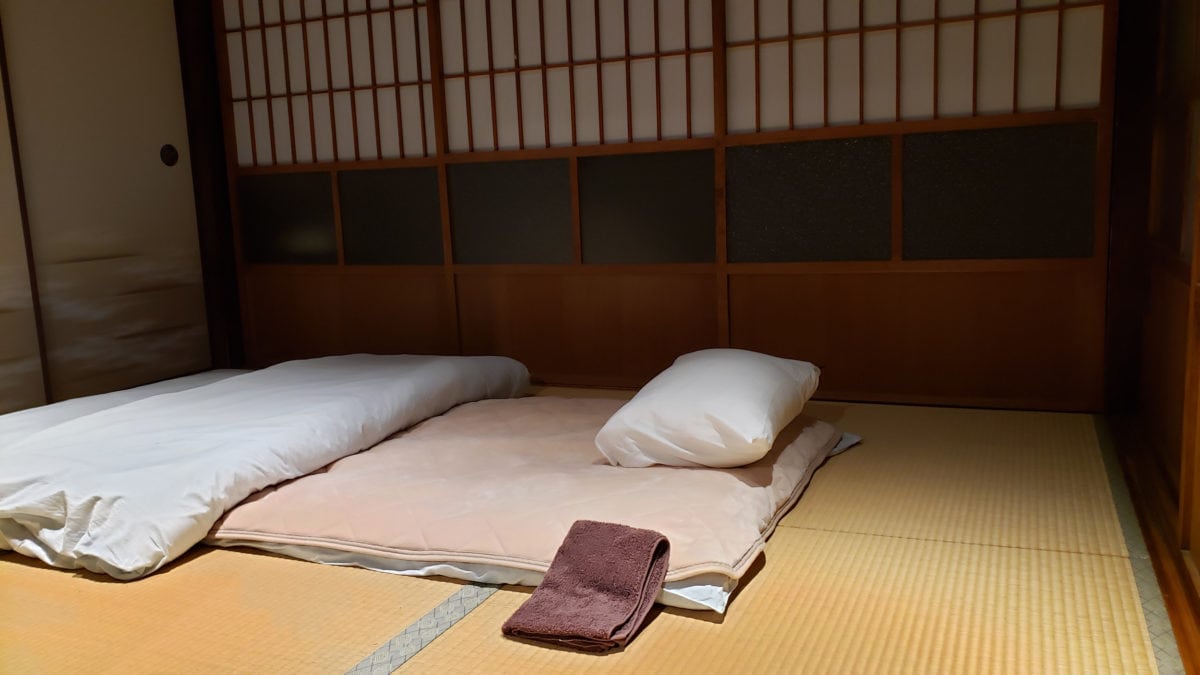
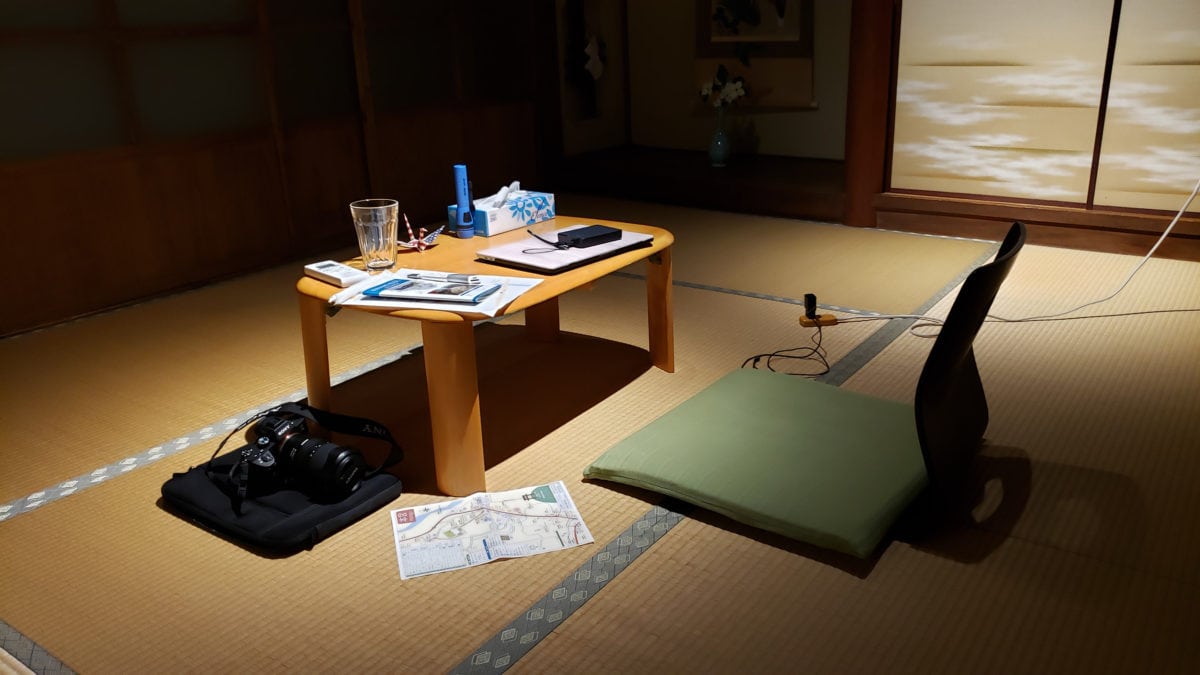
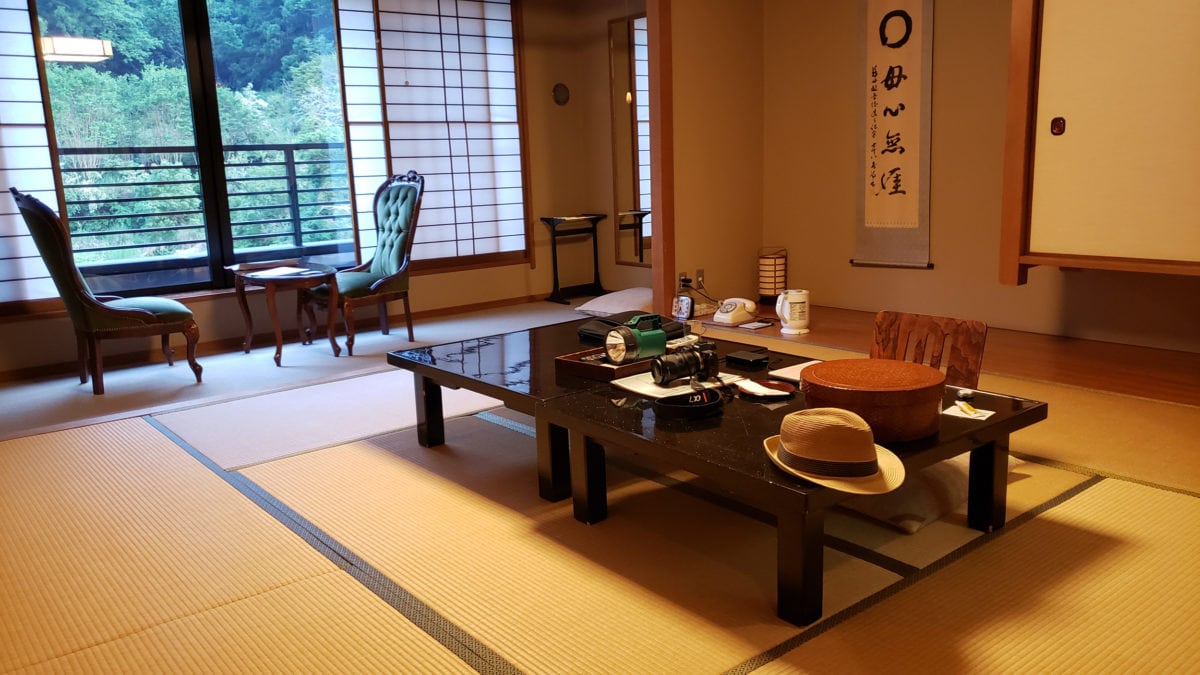
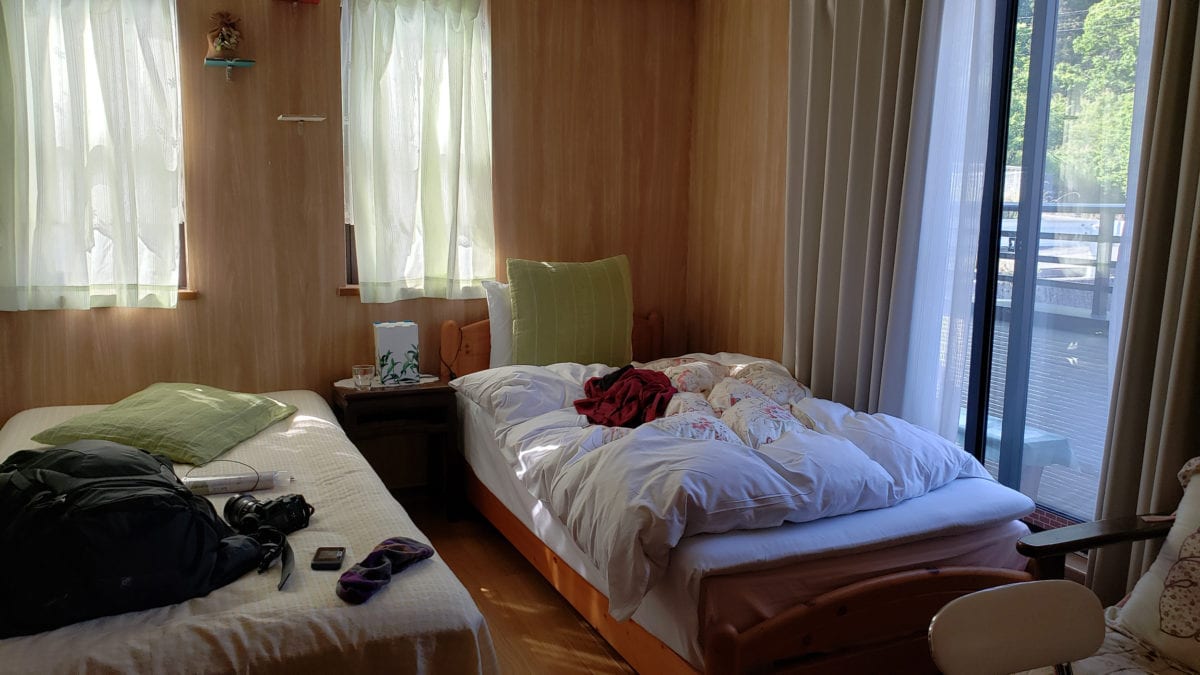
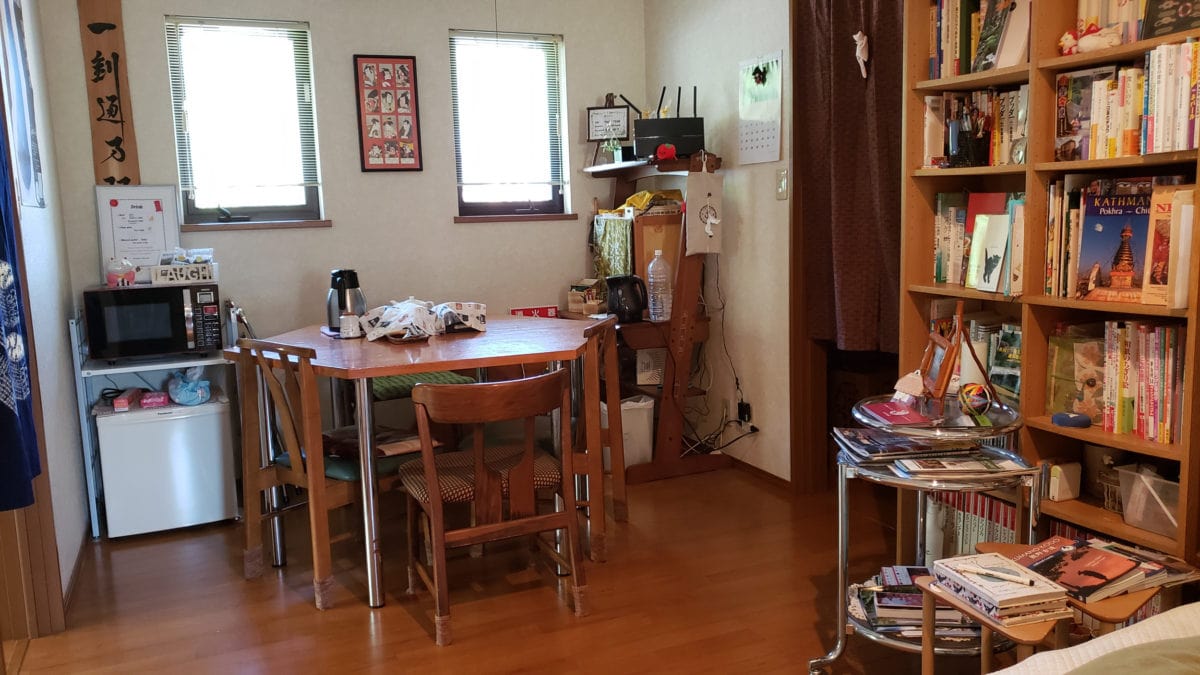
Oku did a great job of finding me cool places to stay so that I could try out a variety of styles that represented the history, culture, and hospitality of rural Japan. You’ll want to book this as far in advance as you can though as many of the towns fill up with their limited inventory. 10 to 12 months in advance will give you your best options.
Do note that many of the inns along the trail do not have websites or English information available and are therefore challenging to book yourself. That’s why I loved using Oku as I knew they could find the best places.
Can you camp along the trail?
Free camping is prohibited on the trail due to it being a protected area. There are a small handful of campsites (which may require reservations in advance) around the trail.
Where and what do you eat?
I normally ate at the ryokans or guesthouses where I stayed. Most nights I sat with 18 small dishes in front of me really only knowing what was on about 5 of them! The dinners I had at Ryokans were incredible – and plentiful. It’s quite an experience not knowing what you are eating at all or even how to eat half of the stuff put in front of you – but if you approach it with curiosity and an open mind it’s pretty damn fun. I looked forward to dinner every night as I had no idea what to expect!
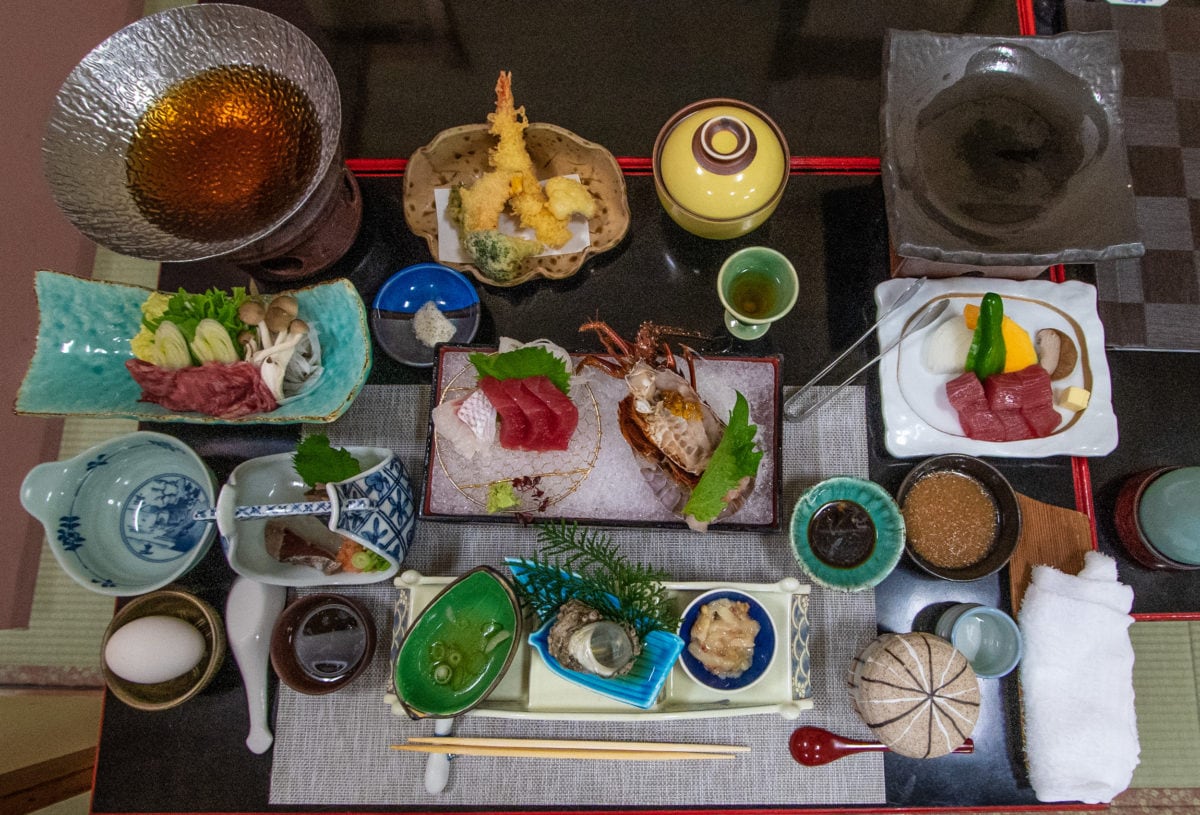
These same ryokans and guesthouses will also serve you a Western or Japanese breakfast. They also provide packed lunches for you along the trail.
There are no villages along the trail to stop and get food or snacks; have your food/snack needs sorted before you start your hike for the day. When you go out on the trail for the day, you are normally on that trail all day until you get to the town where you are staying next to the temple.
Lunches were always a surprise – I never knew what was going to be packed. Don’t expect a sandwich and chips! Normally I had some sort of bento box of rice balls or rolls, some fish, and some tofu.

Hike the Alta Via 1 in Italy’s Dolomites
How well is the trail marked?
Trail markings are very good, and even though I had maps, I honestly never looked at my maps once! Since you are mainly hiking through the forest – it’s pretty obvious what direction you need to go as the path through the trees is easy to see. There are km marker signs along the trail too. Every half km is marked which is really useful and coincides with the map at the Pilgrimage Center mentioned below.
Oku Japan gave me a ton of detailed maps and information for my self-guided hike including detours. In addition, I highly recommend picking up the route map at the Tanabe Tourist Information Center next to the Kii Tanabe station or the Takijiri Pilgrimage Center.
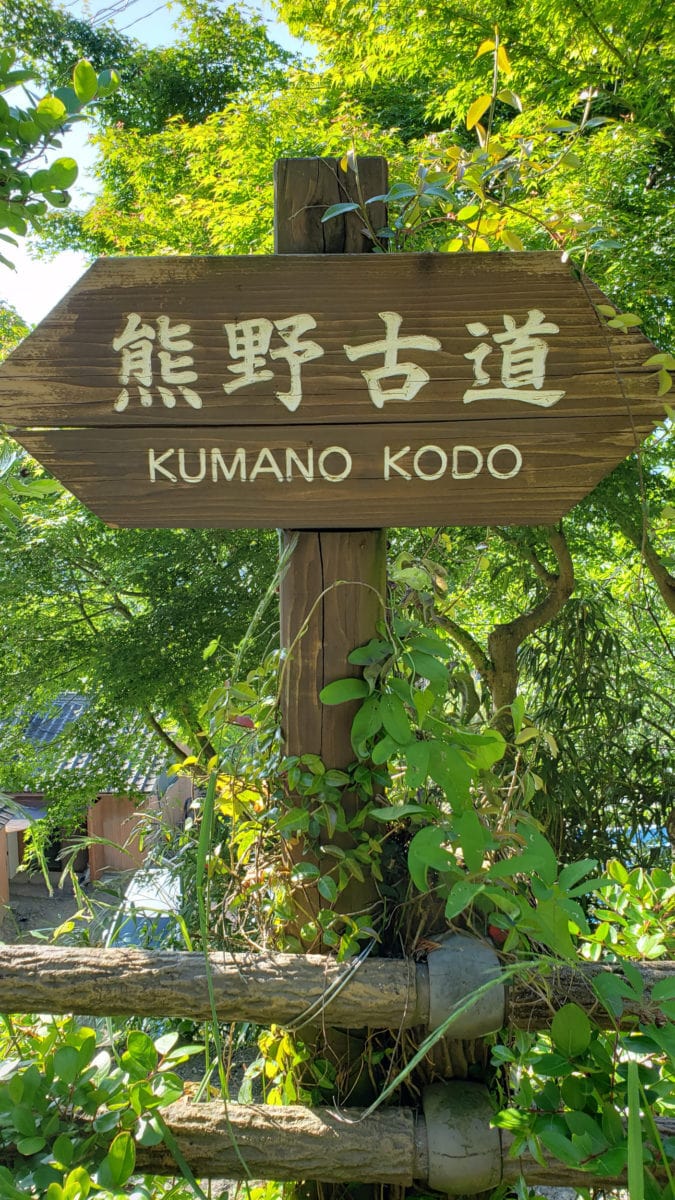
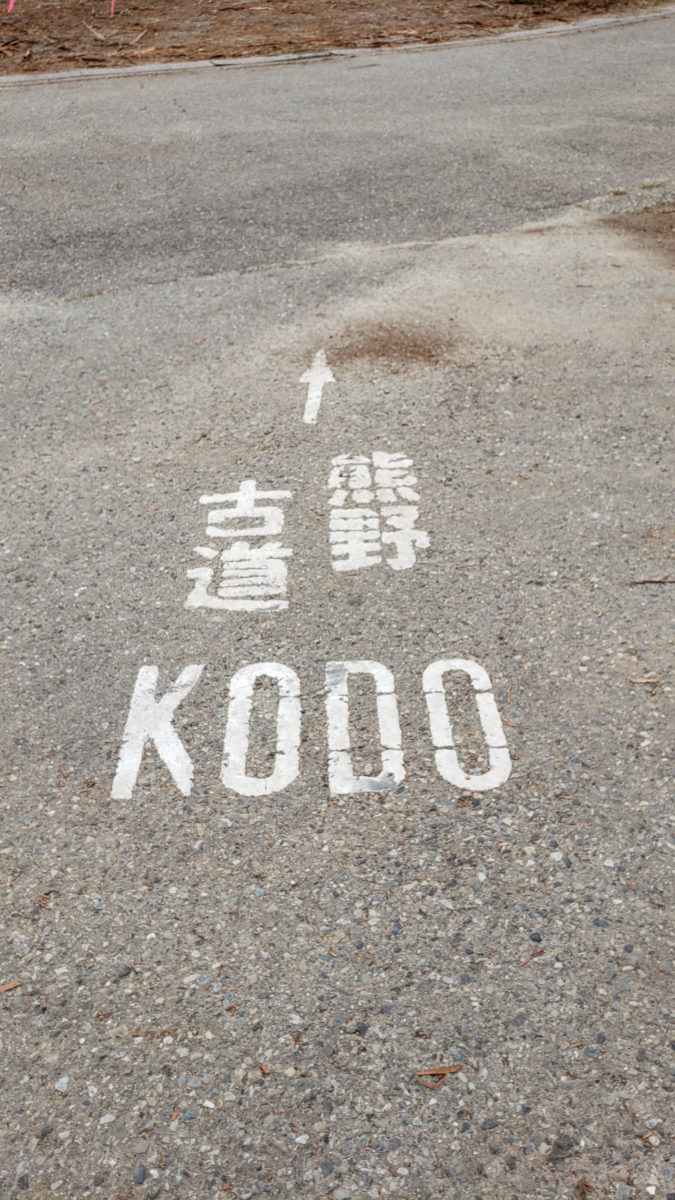
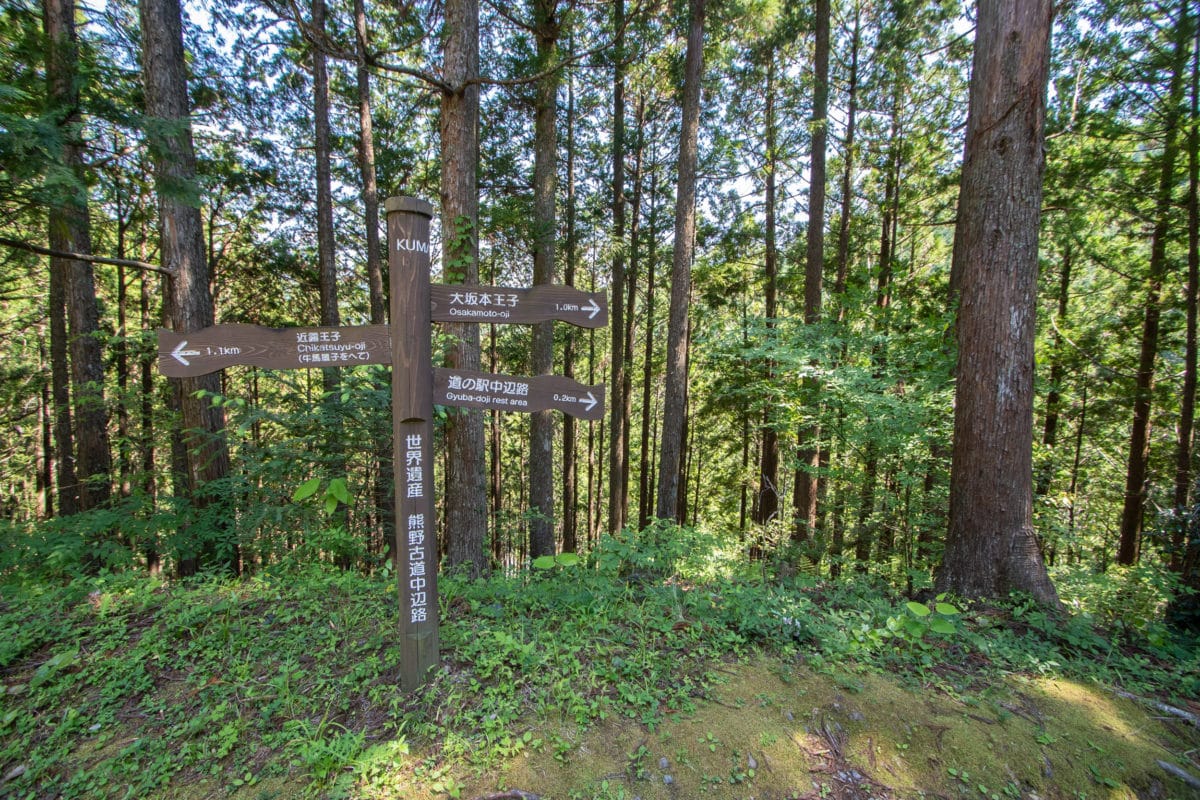
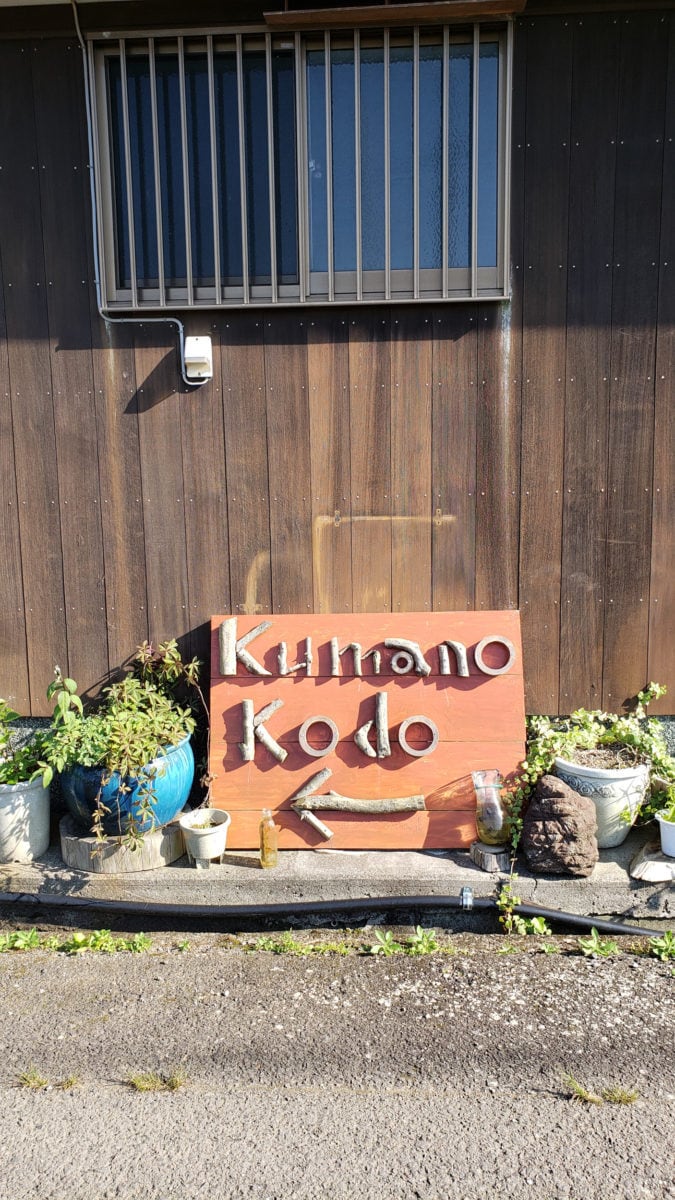
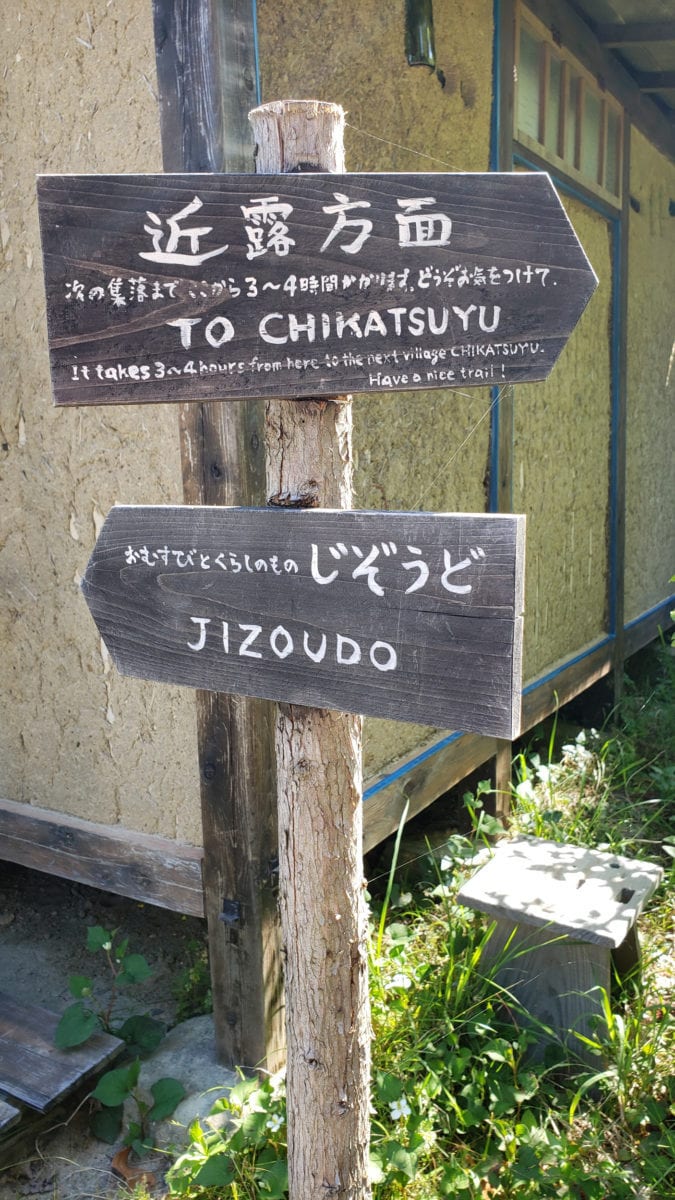
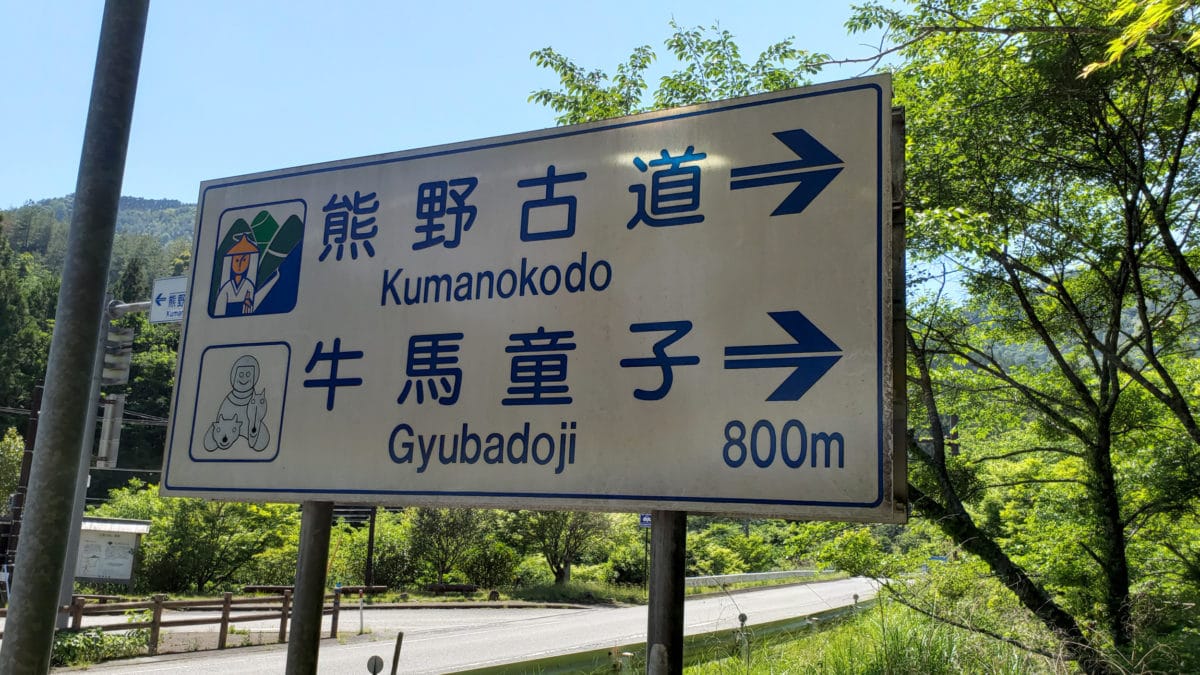
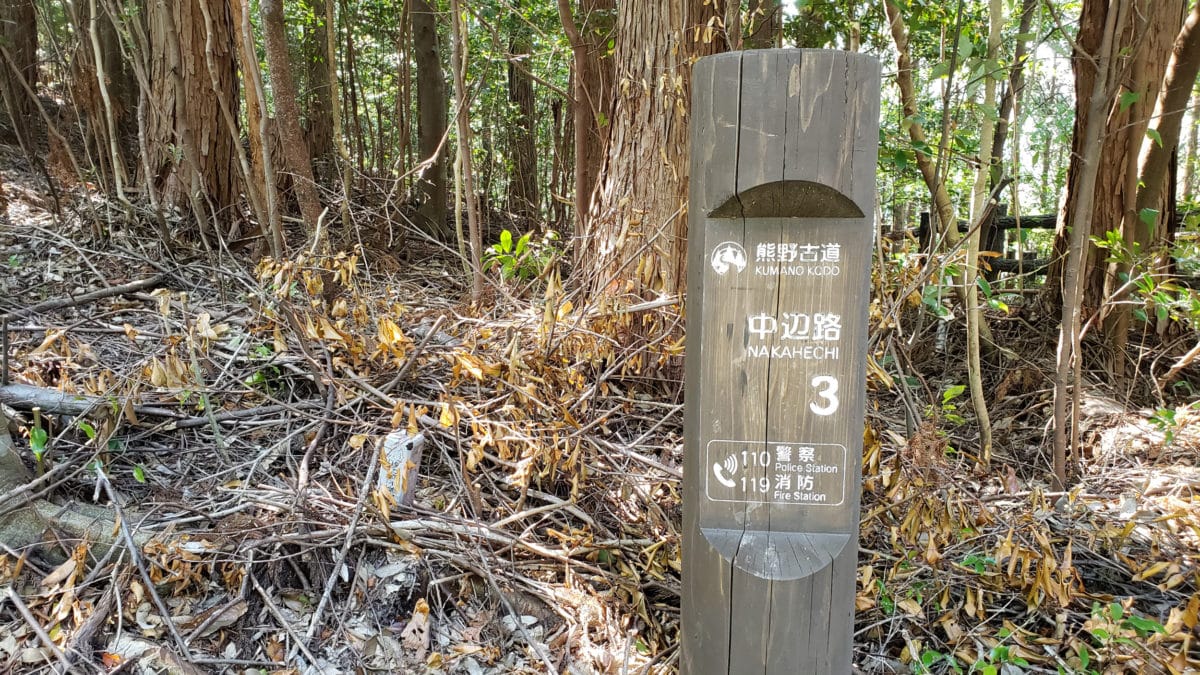
What are all of the statues along the way?
If you see a statue with a cloth around it, it’s a Jizo statue. Throughout Japan the Jizo statue is normally in memory of deceased children, however along with the Kumano Kodo, they take on an additional meaning. The Jizo protects hikers from evil and fatigue, inducing the spirits of past pilgrims who died on the trail.
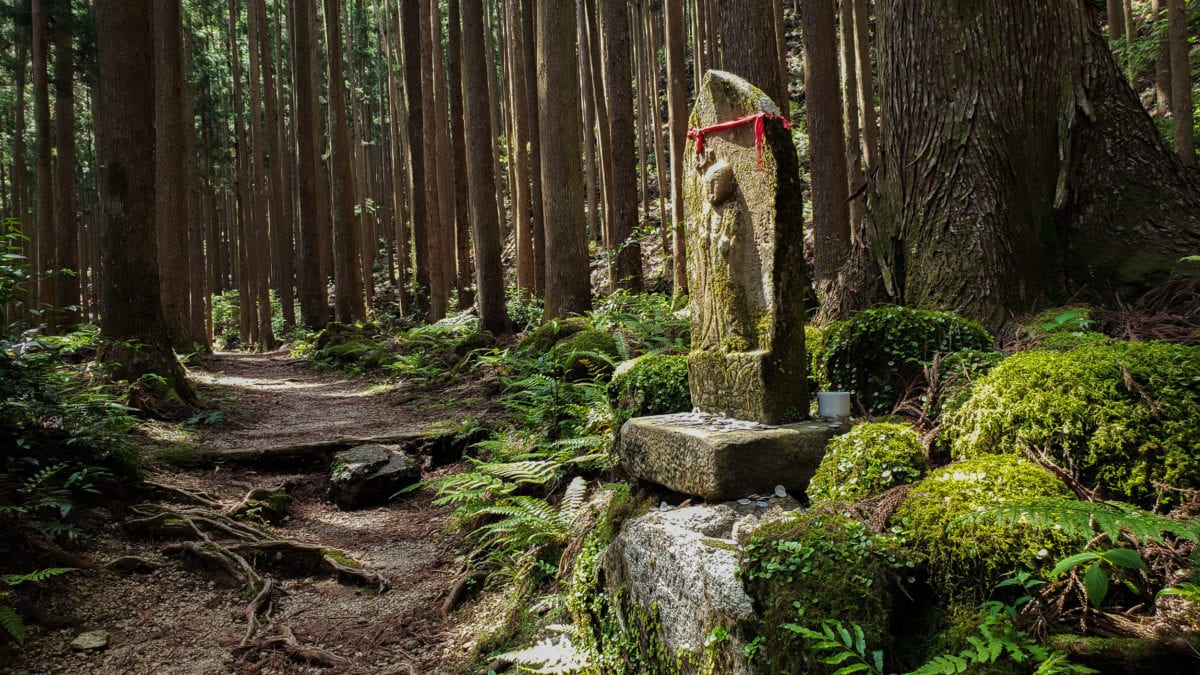
Where do you get your passport stamped?
You’ll find the stamps at Oji’s along the trail. An oji is a subsidiary shrine of the Grand Shrines and they are said to house deities too. You’ll normally find a nicely constructed little house (like a giant birdhouse) with a door. Open the little door and you’ll find a stamp and ink pad. It’s simple – stamp your own passport as you go!
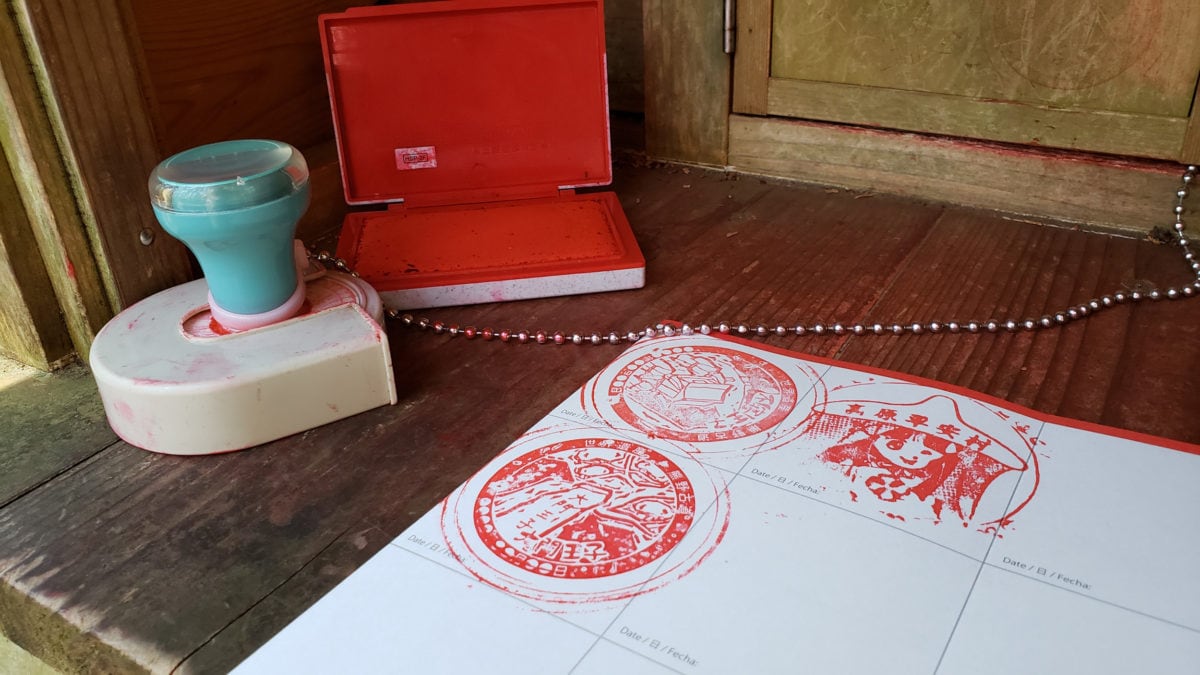
Do you need to know Japanese?
No. I didn’t know any Japanese. Everywhere I stayed there was someone who spoke English. I was always able to communicate. It had been 12 years since I was last in Japan and they have come so far regarding communication it’s impressive.
Not only do more people speak English, but all signs and transportation are also in English. I was surprised when I got on the local bus in one of the towns to get to the trailhead and the bus stops were all in English. There were also instructions on how to pay in English. I never really struggled except for a few times eating dinner. And quite frankly, I’m much better off not knowing what I’m eating sometimes!
Do you have to hike independently or can you go with a group?
You can do it either way depending on your style. You can certainly hike it independently and plan everything yourself. Do note it is a bit harder to book the accommodation on your own since many of the websites aren’t in English, but it’s possible. You would just need to ensure that you have all of your lodging pre-booked and then you can simply walk on your own!
If you are planning an independent trek, then you may want this guidebook, Japan’s Kumano Kodo Pilgrimage, to assist you. The guide covers the Nakahechi and Kohechi trails in full, as well as the Choishimichi route to Koyasan, the Hongu loop, and highlights of the Iseji trail.
The UNESCO World Heritage trek
You can also do self-guided like I did and have a company like Oku set up your lodging and secure your dinners. And you can also do fully guided trips too.
How much does it cost to hike?
Since I did it through Oku Japan, I am only familiar with their pricing.
Independently (Self-Guided)
They offer 4-day to 11-day trips ranging from $975 to $2270. This includes lodging, breakfast, dinners, maps, roundtrip trains from Kyoto or Osaka, and support while you are on the trail if you have issues.
Group Tour
Oku offers a 9-day guided tour at certain times of the year for $3225 that includes an English guide, lodging, entry to museums, breakfasts, dinners, roundtrip, some luggage forwarding, and a train from Kyoto or Osaka.
Can you have your bag or luggage transported?
YES! I love any hike where you can transport luggage! However in all honesty – you don’t need much luggage if all you are doing is hiking the Kumano Kodo while you are in Japan. Every place you stay along the trail will provide you slippers which you must wear inside, and they also provide a yukata robe that you are encouraged to wear inside. So honestly – all you need is your hiking boots and hiking clothes, the lodging takes care of the rest. They even provide toothbrushes, toothpaste, and all the toiletries you would need!

However, if you are doing more than just hiking, Oku offers their clients a luggage transfer option. For people who want nightly access to larger luggage while on the Kumano Kodo Nakahechi trail – they offer this ”Daily Luggage Transfer” service, as an add-on option during our online booking process.
In addition, outside of what Oku offers, there are companies throughout Japan that will ship your luggage and it’s a great system! I used it to ship my other travel gear from my Osaka hotel (where I left for the hiking trail) to my Kyoto hotel (where I went after hiking) and they stored it while I was on the trail. It’s a super system and they will ship it anywhere. The only catch is that they say it takes 48 hours for it to arrive. So you just have to plan a little ahead. For hiking though, it worked perfectly since I was on the trail for 6 days and didn’t need all of my luggage!
Is there Internet access?
Yes – all of the places I stayed had access to internet. In addition, I also rented a Telecom Square MiFi device to use for the whole time I was in Japan so that I would have access on the trail and everywhere quite easily. A MiFi device means that not only can your phone have data access anywhere, but so can your laptop, or multiple phones.
Can you bike the Kumano Kodo trails?
No – only walking is allowed on the Kumano Kodo. No bikes or horses are allowed.
Kumano Kodo Gear List
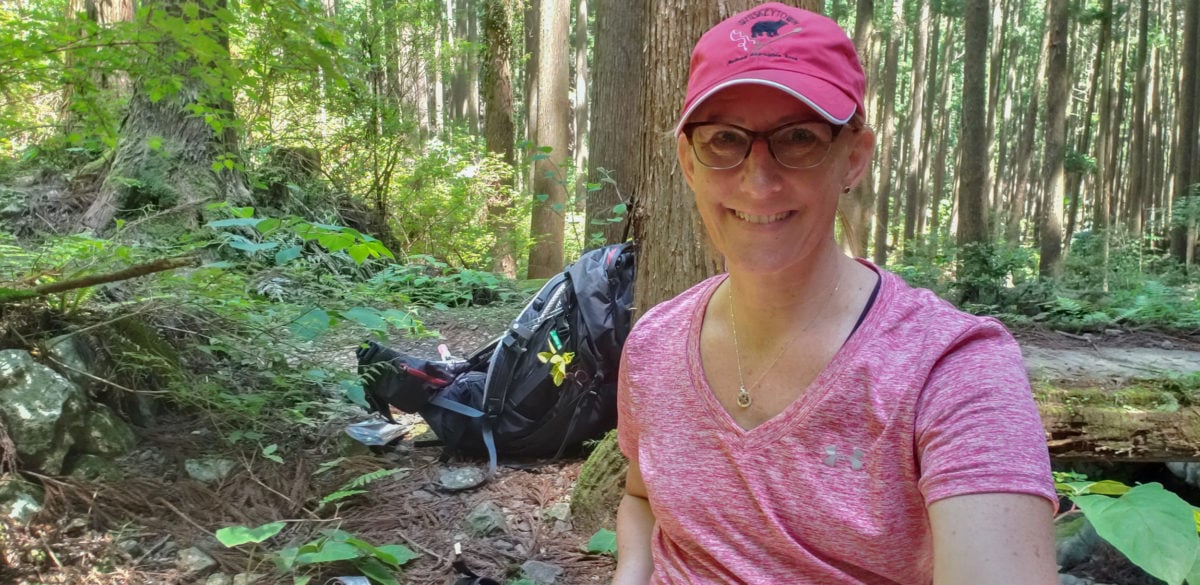
Gear needs are pretty minimal since as I mentioned before – this hike is unique since they provide slippers and robes at every place to stay! However, there are a few key things worth mentioning that I was SO happy I had with me for this hike!
You’ll Need Sturdy, Supportive Hiking Boots
Since this is a real trail with lots of rocks, I recommend hiking boots. I wore my Oboz Bridgers and they worked great for me. I was happy I had the extra ankle support. They are waterproof which helps in the rain and a few of the little water crossings. What I loved most about the Bridgers was the high-quality insole providing incredible support. AND they plant a tree for every pair of shoes sold!
My favorite hiking boot. I have hiked with them all over the world. Rugged boots with great footbed support. Sole is great for rocky trails, and the color is pretty cute too! Great for hard hikes and thru hikes.
Hiking Poles are a must for the Kumano Kodo!
There were a few days (especially the last one) where I was so thankful I had hiking poles. The trail has a lot of up and down, uneven surfaces, and lots of mossy rocks; these are the kind of hikes where you’ll want poles. If you have never used poles before, then it’s up to you, but I still recommend them!
I used my Montem hiking poles and they performed beautifully. They are super lightweight (carbon fiber) and I love the cork handles that soak up the sweat. There were many times when I depended on the flick locks being secure, or else I could have been badly injured and they never slipped!
One Pair (2 Poles) - Ultra Light, Quick Locking, and Ultra Durable
The Perfect Backpack for the Kumano Kodo
I took a Deuter Futura 45+10. This particular pack is part of Deuter’s women’s series because women are built differently than men…duh. It has a Vari-Slide System allowing exact adjustment to every back length; ensuring the pack sits perfectly on your hips. However – it may be bigger than what you need. It depends on how much you are taking with you. I was carrying camera gear, rain gear, my laptop (yes, that’s that hard part about being a blogger!), lunch, 3L of water, a first aid kit, extra clothes, and a few toiletries.
Vari-Slide System allowing exact adjustment to every back length, ensuring the pack sits perfectly on your hips. A comfortable women's backpack for longer hiking trips that can go from 45L to a max of 55L.
If you want to simply carry a daypack and have luggage moved then this Osprey Sirrus 24 Daypack. My favorite thing about this pack is that it allows you to stow and remove trekking poles in seconds WITHOUT taking off your backpack! I love this pack for many reasons (its length is adjustable, it has an attached rain cover, the waist pockets are big enough to fit a phone, the water system is great, and it allows air to flow to your back) – but I LOVE how easy it is to store and retrieve your poles. 24 L is a good size for a long day hiking where you can store rain gear, first aid, water, and snacks comfortably.
This is my 'go-to' day pack for hiking. It's got a great hip belt and support. It comes with a rain cover - no need to buy it separately! My favorite feature is the Stow and Go Trekking Pole functionality - you can store and easily get out your hiking poles without taking off your pack! Big water bottle holders and space for a water bladder! The perfect pack!
What you need in your backpack:
- First Aid kit
- Rain gear
- Snacks
- Toiletries
- Extra comfortable pair of shoes (only if you don’t want to wear the Ryokan’s slippers)
- Comfortable lounging clothes
- Camera
- Extra external chargers for camera/phone
- Extra pair of socks
- Journal
Use the Cotton Carrier for Photography While You Hike
The Cotton Carrier is a must for any outdoor photographer! If you carry a DSLR camera and also do a lot of outdoor adventures or hiking – then the Cotton Carrier will change your life too! This harness is great for holding your camera securely (no swinging or jiggling!) while you hike. It’s easy to quickly pull out of the chest lock and use the camera in one smooth motion. But the best part is that the harness is dispersing the weight properly instead of around your neck only.
I don't go on a trip without this harness! It allows me to be hands free when hiking and snowshoeing. I've also used it while horseback riding. It has saved my neck and back and it a secure, healthy way to carry my camera!
10% off coupon code for readers - OTTSWORLD
Don’t Leave Without This Essential Hiking Gear
I’ve hiked all around the world and have found some key gear that I take on every hike for every kind of weather. From backpacks to socks, check out my list of the best hiking gear out there!
Now you know everything you need to know for planning your Kumano Kodo hike! Everyone heads to the big cities in Japan, and that’s why I think I liked this hike so much – it embedded you in the rural Japan you seldom see. It’s an incredibly rewarding experience that will bring you closer to the culture and spirit of Japan!
Related Posts:
Essential Hiking Gear: An Easy-To-Use Guide for Any Hike
Training for Hiking Long Distances
Best Hikes in the World I’ve Personally Completed
7+ Thru-Hiking Trails Around the World: Alternatives to the Camino de Santiago
Disclosure:
I was hosted by Oku Japan during this hike, however all opinions expressed here are my own.
This post contains some affiliate links. If you choose to purchase items through these links, I will earn a small commission at no extra cost to you. These commissions help reduce the costs of running this site

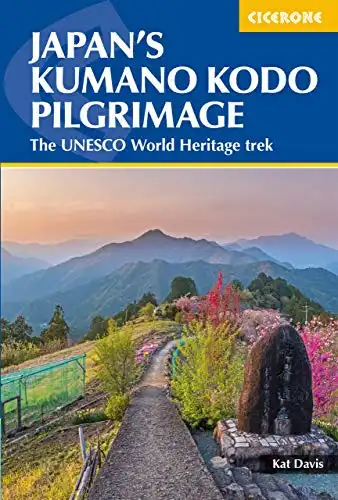
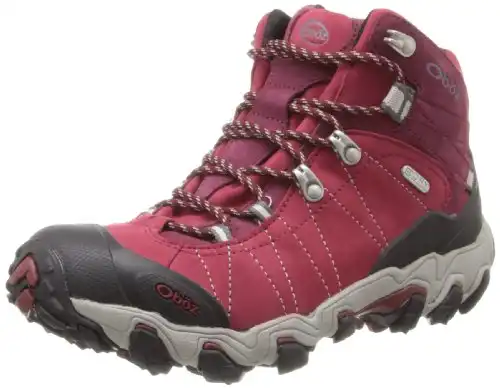
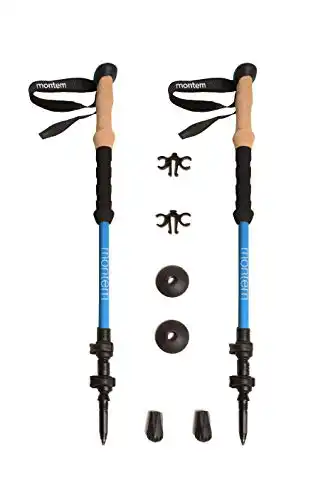
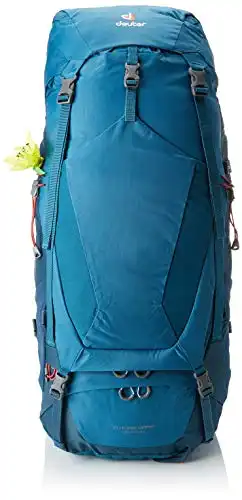
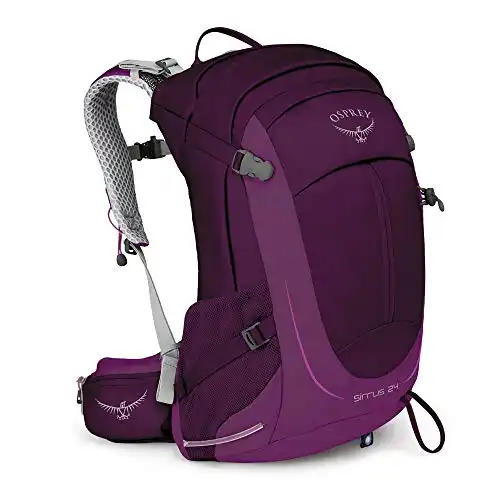
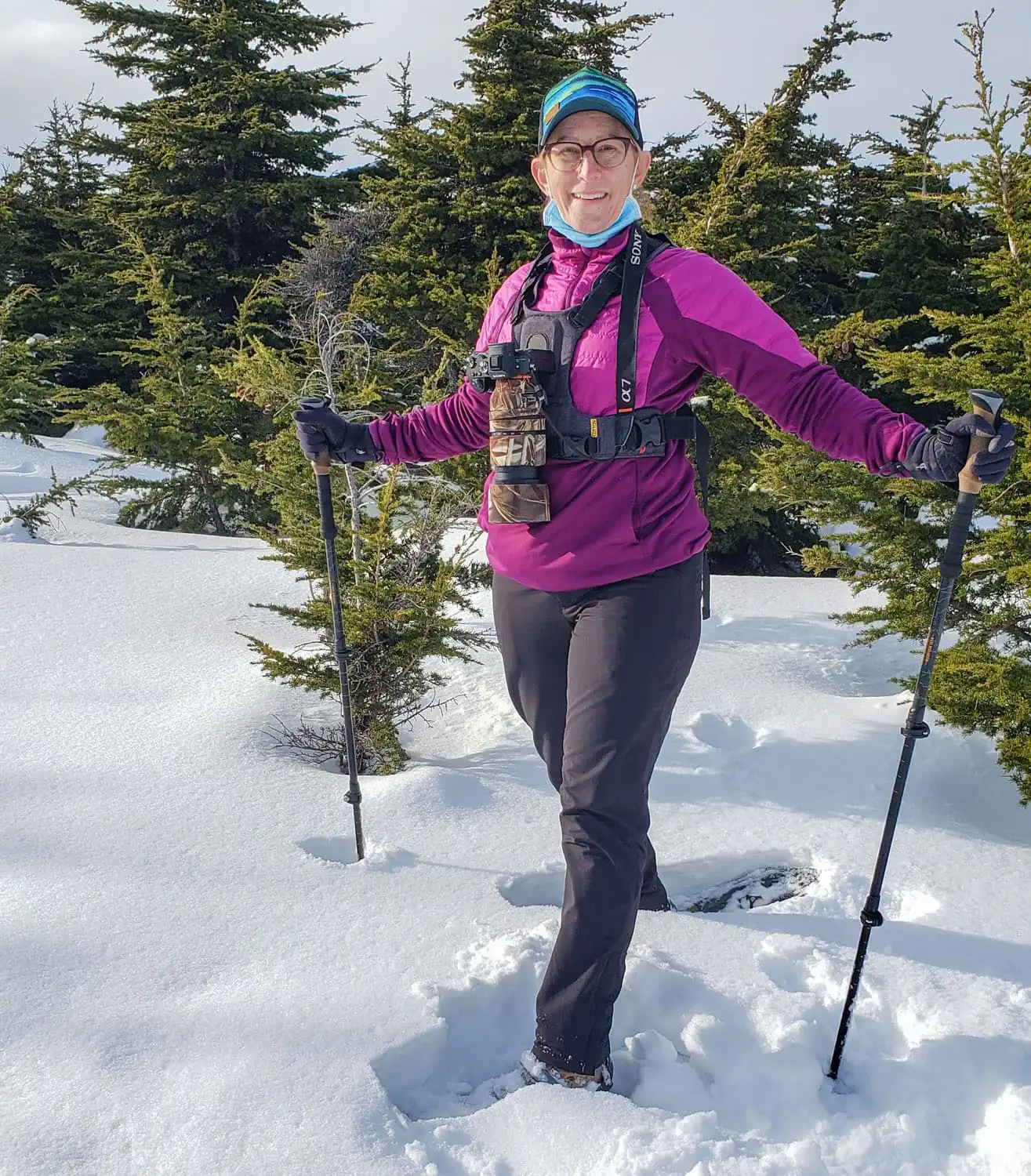

By Blanca September 9, 2019 - 6:55 am
This post brings up so many good memories! Hiking Kumano Kodo was definitely one of my best travel experiences despite the horrible rainy weather. The spirituality of the place and the lovely ryokans felt really special. Now it’s time to try Camino de Santiago, which is actually much closer to our home in Barcelona!
By Jessica Kokoszki October 4, 2019 - 9:04 pm
This was a really fun read. I’d love to visit Japan someday and fit this into my plans!
By dolphin tours October 28, 2019 - 4:46 am
I read your blog and..Thanks for sharing your journey of the History of the Kumano Kodo Pilgrimage…
By Sandra Focseneau November 6, 2019 - 9:23 pm
Great blog! Thank you for posting. Quite informative and useful.
One quick question: I would not want to hike alone (are there animals on the trails?) so is it possible to hire a guide for the hikes only? If so, how?
Thanks much.
Sandra
By Sherry November 26, 2019 - 11:56 am
No – there are no animals on the trail really. Oku does do some guided hikes but only at certain times of the year – check them out!
By Margo November 27, 2019 - 5:07 pm
Thank you for your blog. Do you need to take a sleeping bag or is bedding provided? I am trying to do the hike as light as possible.
By Sherry November 27, 2019 - 6:03 pm
The inns provide bedding – there’s no need to take a sleeping bag! You can do this hike very lightly if you wish!
By jale December 14, 2019 - 4:01 am
Hello, is there a certificate after finishing the trail? a stand-alone certificate not the dual pilgrim.
By Sherry December 31, 2019 - 11:59 am
I don’t believe there is – but I honestly don’t know. Let me try to find out for you!